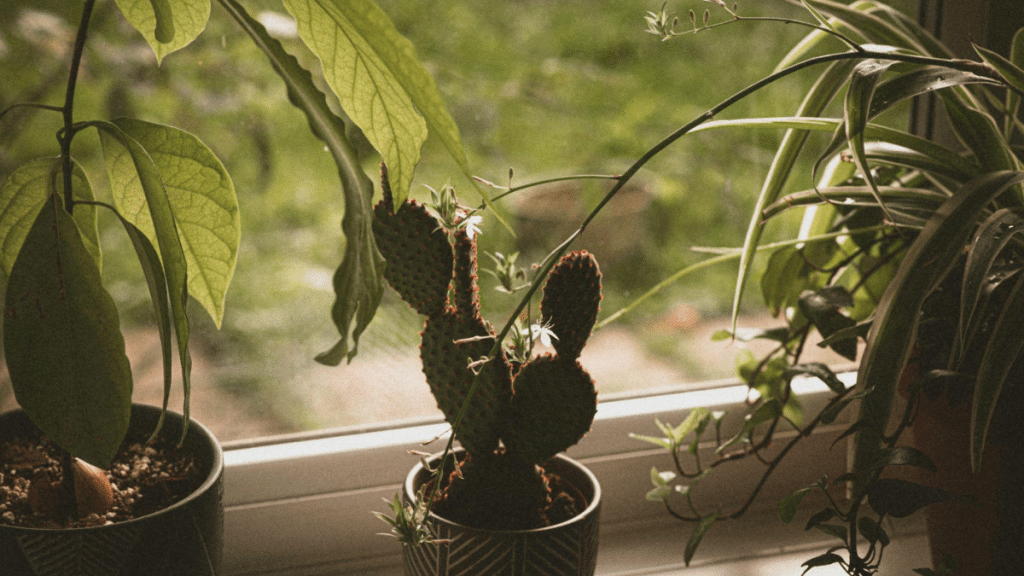For most of us, having houseplants in the home brings an improved aesthetic and cleaner air. However, what we often don’t consider with houseplants is the pests that those plants can attract. Seasonal bugs are a particular issue, as they will seek out warm spaces with plenty of food sources, but may go unnoticed until they’re already well established.
This article explores the different types of common household bugs, the risks they cause and how you can go about ensuring optimum plant health while managing any infestations. Whether you’re a seasoned plant parent or new to indoor gardening, this guide offers practical insights on keeping your plants healthy without compromising your commitment to eco-friendly living. With the right tools and knowledge, you can maintain a thriving indoor jungle that’s both beautiful and bug-free—the natural way.
What are the most common household bugs?
According to Matt Frye, community extension educator at New York State Integrated Pest Management, house bugs can be classified into different categories, with each suggesting something different about why they’re there and what they want. You’ll usually encounter:
- Occasional invaders like spiders and centipedes, who live just outside your home and might make their way in once in a while.
- Overwintering bugs, such as flying insects that enter homes in fall for protection against the cold weather, like stink bugs and cluster flies. This category also includes plant-specific pests like aphids, mealybugs and spider mites, which can survive the winter in a semi-dormant state.
- Food and kitchen bugs which pose a threat to health and property, such as ants, cockroaches, which come into the home in search of food that has been left out.
- Fabric and paper-eating bugs such as moths, carpet beetles, and silverfish. These types of bugs can also damage things in the home.
What are mealybugs?
Mealybugs are small insects typically found on plants, especially houseplants and those in greenhouses, making them a real risk for professional growers and hobbyists. They are small, oval-shaped, and often covered in a white, waxy substance. An infestation of mealybugs is characterized by a white, fluffy mass on the plant leaves or stem, which is often described as looking like cotton.
They feed on the plant’s sap, which can weaken the plant and cause various problems like stunted growth and premature leaf fall. Mealybugs are just one of several common household bugs that can infest houseplants. Others include aphids, spider mites, fungus gnats, and scale insects. Each of these pests has unique characteristics and weak points, making it important to correctly identify the invader before taking action.
Controlling a mealybug infestation often relies on prevention, early detection, and non-toxic remedies that support a balanced indoor ecosystem rather than disrupting it.
What problems do household bugs cause?
Mealybugs and other common household pests can cause a range of problems that negatively impact plant health and appearance. They can even cause harm to your health and damage your property, but there’s more on that below. Some of the main issues they create for your plants include:
Sap Drainage
Mealybugs have needle-like mouthparts, which they use to pierce plant stems and leaves to feed on the sap within. This weakens the plant, depriving it of essential nutrients needed for growth and development.
Stunted Growth and Wilting
Pests like mealybugs and those similar to them drain the nutrients from your plants. As a result, plants may exhibit slow or stunted growth. Leaves can become yellow, wilted, or fall prematurely, and flowers may fail to bloom.
Sooty Mold
As they feed on the sap and nutrients of your plant, mealybugs excrete a sugary substance called honeydew. This can coat the leaves and stems of your plant and attract sooty mold, which is a black fungus-like growth. As a result, the leaves and stems will be unable to soak up sunlight, and so photosynthesis isn’t possible.
Leaf and Stem Damage
Heavy pest infestations can cause visible damage such as leaf curl, deformation, or stem distortion. Over time, this weakens the plant’s overall structure and vitality.
Root Damage
Certain types of mealybugs (like root mealybugs) live in the soil and attack plant roots, causing root rot-like symptoms and making the plant more vulnerable to diseases and dehydration.
Attraction of Other Pests
The honeydew excreted by mealybugs not only encourages mold but also attracts ants and other insects, which could lead to a more complex pest problem.
In short, mealybugs and similar pests can cause both cosmetic and structural damage to houseplants, severely affecting their health, longevity, and aesthetic appeal.
What are the health risks of common household bugs?
If they’re not dealt with promptly, household pests can also expose you to health risks like spreading diseases and triggering allergies. For example, bugs like cockroaches can contaminate food and surfaces with their droppings, urine and saliva, potentially leading to the spread of diseases such as leptospirosis, salmonellosis, and rat-bite fever. They can also produce allergens that trigger reactions and worsen asthma symptoms, while other insects can bite, sting and maybe even cause irritation that leads to secondary infections. Keeping your home and houseplants free of pests is critical for your health.
How can I keep my houseplants pest-free?
As the presence of mealybugs can lead to the attraction of further pests, controlling pests like mealybugs with treatments that are harsh on pests but gentle on your plants is essential. Non-systemic solutions are specifically formulated to help control pests without plant damage, to eliminate the pests after contact, without poisoning the plant itself.
